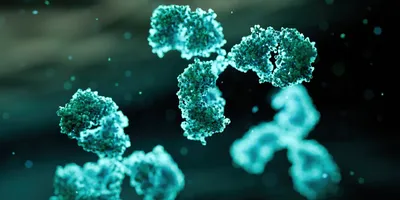Antibody therapeutics are among the most promising treatment modalities today, with more than 100 monoclonal antibody (mAb) therapies currently approved and thousands of ongoing preclinical and clinical studies evaluating potential antibody-based drugs. The advent of recombinant antibody technology unlocked new possibilities in the field, enabling more consistent mAb production and simplifying the creation and customization of innovative antibody formats.
But recombinant antibody engineering techniques aren’t just making an impact in the clinic. As recombinant antibody technology becomes increasingly accessible, researchers are harnessing the same sophisticated engineering strategies behind innovative therapeutics to create powerful new tools.
Here, I’ll highlight several key areas where advanced recombinant antibody engineering is improving vital research reagents and driving scientific innovation at every level.
Overcoming persistent challenges in fundamental techniques
Antibodies have been a valuable part of the basic research “toolbox” for decades, enabling researchers to leverage the power of the immune system to precisely probe specific biological markers. However, antibody reagents produced through animal immunization or hybridomas are subject to key limitations. Traditional polyclonal antibodies can vary substantially from batch to batch, potentially compromising experimental reproducibility. While hybridomas can yield large quantities of monoclonal antibodies, genetic drift over an extended period of use can also compromise the reliability of antibody products.
Recombinant antibodies have overcome these limitations and presented additional advantages, ushering in a new “gold standard” for research tools. Even basic researchers can now access consistent, high-quality antibody reagents to optimize their research. Beyond advantages in reliability and quality, engineering techniques that enable researchers to reformat antibodies into different isotypes, species, formats, and more have improved the performance of these vital reagents.
For example, chimerization, which involves reformatting an antibody’s variable region to the constant domain of another species, can simplify the creation of multi-species antibody panels for multiplexing studies and increase compatibility with secondary antibodies. Chimeric antibody reagents also reduce background staining of endogenous immunoglobulins and improve specificity in immunohistochemical (IHC) detection experiments, yielding clearer results. “Fc-silencing” mutations are another recombinant antibody engineering strategy used in antibody therapeutic development that is now improving reagent performance. Modulating Fc receptor binding and effector function can reduce unwanted staining in flow cytometry and IHC applications while maintaining other properties of the antibody.
Innovative antibody tools
In addition to overcoming challenges with the quality and consistency of antibody reagents vital for immunoassays, sophisticated engineering techniques can also unlock new opportunities in reagent performance. For example, engineering antibodies with reactive groups such as non-canonical amino acids (NCAAs) enables precise, site-specific bioconjugation of fluorophores or other payloads to yield better antibody-label/-drug conjugates. While traditional random conjugation results in heterogeneous labeling and, in turn, less efficient and consistent production of the target conjugate. Site-specific bioconjugation techniques reduce variability in performance and facilitate accurate quantification in immunoassays.
Artificial intelligence/machine learning (AI/ML)-based antibody discovery has also emerged as a promising strategy for accurately predicting antibody-antigen reactions and fine-tuning sequences accordingly. These capabilities facilitate more efficient antibody engineering by informing design and increasing the probability of success, allowing researchers to pursue more advanced engineering strategies. For example, pH-sensitive antibodies that “turn on” in the acidic tumor microenvironment have recently gained traction as a potential therapeutic strategy for solid tumors that can also be applied in diagnostic and research applications. Sequence-based modeling methods have simplified the process of predicting effective pH-sensitive binding without repeated rounds of experimentation under different pH conditions. By uniting predictive insights from AI/ML tools with recombinant engineering strategies, it is now easier than ever for users at every level to access customized, fine-tuned antibody reagents for innovative research.
Lab Management Certificate
The Lab Management certificate is more than training—it’s a professional advantage.
Gain critical skills and IACET-approved CEUs that make a measurable difference.
Advancing translational research
In addition to improving fundamental in vitro research methods, sophisticated recombinant antibody engineering techniques have also enhanced the relevance and quality of in vivo research. Anti-species immune responses to antibodies pose a substantial challenge in animal models, impacting data quality and animal health over time. By simplifying the creation of species-matched antibody reagents that minimize immunogenicity, recombinant engineering technology can yield cleaner results and enable researchers to work in longer experimental timelines. Similarly, engineering antibodies with fine-tuned or absent Fc effector function can prevent unwanted immune responses and support chronic dosing regimens by preserving the increase in serum half-life conferred by the Fc domain.
Accessible recombinant antibody engineering also supports translational research exploring innovative antibody therapeutics. For example, bispecific antibodies are among the most exciting therapeutic modalities under study today, but effectively studying bispecific combinations in mouse models poses many challenges. However, the introduction of fully murine bispecific antibody reagents generated through recombinant engineering has helped overcome issues with immunogenicity while increasing the relevance of research in mouse models. As momentum grows in therapeutic antibody development, these and other customized reagents will play a vital role in fueling translational research.












